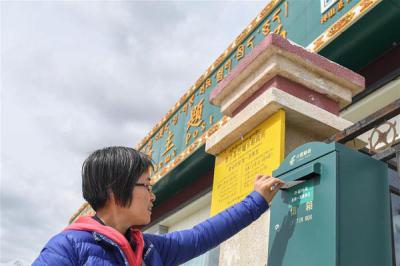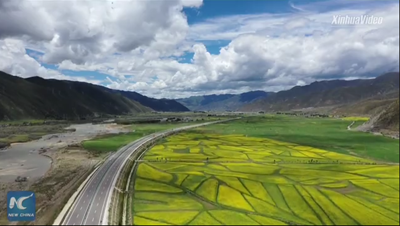Role of Tibet in the Belt & Road Initiative
(Latvia) VjaceslavsDombrovskis Today, China’s “Belt and Road Initiative” (BRI) is well known to scholars and officials throughout the world. However, two divergent views have emerged as to the true nature of the BRI. The Chinese leadership presented the BRI as a pure development project, aimed at creating economic corridors, that would directly connect China to markets and peoples in other parts of the continent. These two views do not necessarily contradict each other. Indeed, by articulating an initiative that puts common development over power politics, China may eventually gain a moral advantage over other major countries. Historically, Tibet has played an important role in the whole Silk Route trade route, being the gateway to South Asia. Given the BRI vision and Tibet’s historical role, it’s fair to ask about the capacity of the Tibet Autonomous Region (TAR) to integrate with BRI. Although Tibet's economy has experienced 21 years of continuous double-digit growth, it is not known for housing industries that can carry out large-scale production for export. Tibet's development still depends heavily on the support from the central government. In January 2015, the third plenary session of the 10th Tibet People’s Congress announced the launch of the “Himalayan Economic Rim” that will be directed towards markets in the three neighboring countries of Nepal, India and Bhutan. The aims of the HER were to develop border trade, boost international tourism, and strengthen industries. Some significant steps have been made in the last few years. In 2007, the opening of the Qinghai-Tibet Railway brought an end to Tibet's history without trains. Significant progress has been made in upgrading TAR's connectivity to Nepal. The TAR has accounted for over 90 percent of China’s foreign trade with Nepal since the opening of the Xining-Lhasa railway in 2006, implying that the railway facilitated the transportation of goods from coastal China to the TAR and on to Nepal. This has been underwritten China's aid to Nepal in a series of infrastructure projects including roads, power grids, bridges and industrial parks. However, the BRI (and, within it, HER) experiences some strong headwinds in India. Transport infrastructure is still lacking. It is telling that more than 90 percent of trade between India and the TAR, which border one another, passed through the port of Tianjin in North China, located 4,400 kilometers away. One reason might be India’s reservations about the BRI. Indeed, there are signs that India’s political leadership may view this initiative with suspicion. Clearly, India’s antipathy towards the BRI is bad news not just for the whole initiative, but for especially for the Tibet region. A way forward might be to focus on economic cooperation with the state governments in northeast India. These actors are likely to be less interested in geopolitics than the national government. VjaceslavsDombrovskis, Latvia
Chairman of the Group of Cooperation
Promotion toward China, Chairman of the
Sustainable development committee, Member of
the 13th Parliament(Harmony) of Parliament of the
Republic of Latvia
|
- Home
- News Tibet |Exclusive |China |World |Other Tibetan-Inhabited Area |Tibet through the Eyes of Foreigners |Related News
- Documents White Papers |Others
- Photo Politics |Economy & Society |Culture & Religion |Human & Nature |Beautiful Tibet |Other Tibetan-Inhabited Area |Exchanges |Related
- Video News |Documentary |Micro-Video |Entertainment
- Art
- Tourism
- In Focus
- About Tibet






